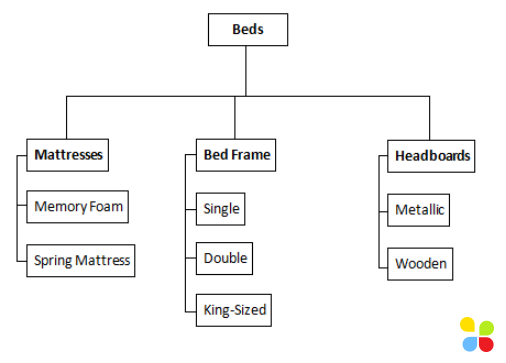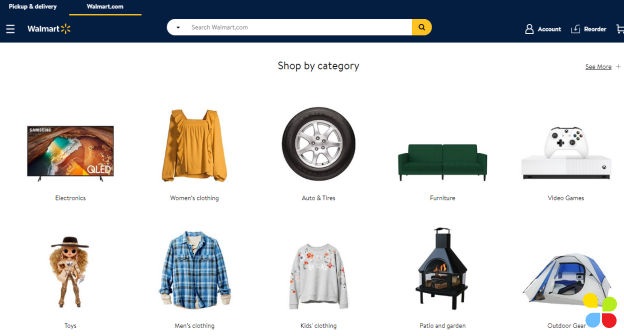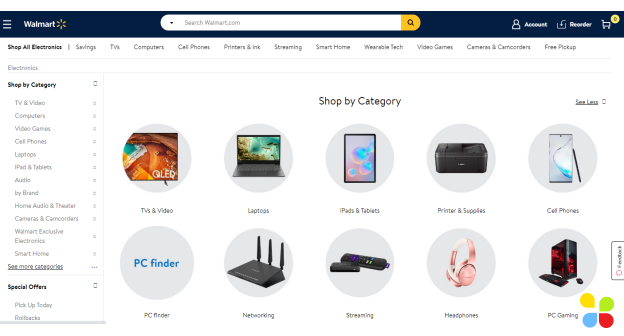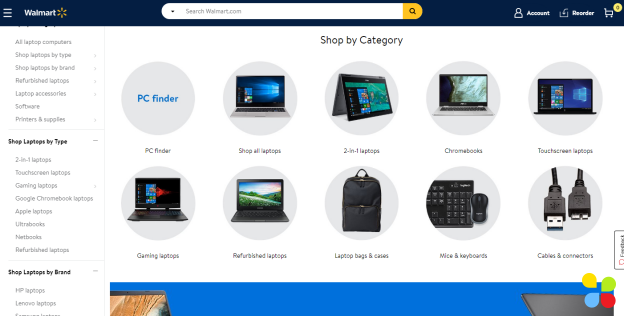Running an eCommerce business involves a number of considerations. You need to have a responsive, easy-to-navigate web design to hook visitors and then catchy web copywriting to reel your customers in. However, have you thought about the product hierarchy or taxonomy of your eCommerce store?
A product hierarchy is the way you categorize your company’s products and/or services based on their essential components into a structure that makes sense. It is the basis of your eCommerce store’s sitemap and structure. Also known as product taxonomy, this is a relatively less known part of the eCommerce industry that many newcomers don’t give enough attention to.
Failing to do so can make it challenging for existing and potential customers to navigate your offerings and find what they are looking for. Conversion rates take a hit and you’ll be left wondering why your healthy traffic isn’t buying from you.
Product Taxonomy Definition (What Is a Product Hierarchy?)
Product taxanomy or hierarchy is the structure you use to organize all available products so customers can browse and find what they want with as little effort as possible.
Typically, a product hierarchy involves dividing all the products into distinguishable categories and sub-categories. eCommerce stores with a wide range of products or even similar types of products can use a well-defined product hierarchy to make navigation easier for their customers.
Example of Product Hierarchy
I will give some product taxonomy examples to help you understand what I’m talking about.
Suppose you own a company that sells Beds and related products. Here is one way you can expect to see the structure.

A customer visiting your eCommerce store looking to buy a King-sized bed frame will follow this logical structure:
Beds > Bed Frame > King-Sized
The end result is to allow your customers to move easily through the different levels to find what they are looking for.
You can even create multiple product hierarchies for different views of the same data.
Suppose you have a music streaming platform. You can create product hierarchies based on genres, dates released, most-listened-to tracks, or any other categories. It can allow visitors to view the products and navigate them in a way that makes the most sense to them.
The Importance of Product Hierarchy in eCommerce
Imagine you are at Walmart, and you’re there to get some bread. You’re searching in the Fresh Food aisle but can’t find it. The bread is actually in the Bakery Items aisle.
If you are short on time and you don’t have a way to find the bread, you might get frustrated and leave empty-handed, and find another store that categorizes its products well.
Even if you stick around long enough to find the bread, your experience won’t be ideal, and it’ll color your opinion of Walmart.
Let’s also look at Amazon as another example. The Amazon product taxonomy is so detailed and well-laid-out that customers are easily able to find what they’re looking for in a matter of seconds. Whether you’re looking for a common product or something that’s more niche, you know that the product you’re looking for is just a few clicks away when you’re on Amazon.
The fact that exiting a store is easier in the world of online shopping means that you’ll lose customers faster – and most likely forever.
The average attention span of people on the internet has never been very high. People are short on time and patience while shopping online. The average attention span of internet users is 709 seconds.
If your eCommerce store forces your potential clients to make more of an effort than they expect, it’s likely that they will just go to another store that’s easier to navigate. Over time, you can suffer from a loss in sales, and it will reflect poorly on your brand.
An argument you can make is that your customers can simply find the products they want through the search bar. The problem is that if your data is not organized, the search option will not work either. Search functions also require proper classification to provide the right results.
There is no way you can avoid having a defined product hierarchy as a retailer.
Product Taxonomy Boosts Your Sales
A product taxonomy is also important because it can improve your eCommerce store’s sales. Websites that do not have a proper structure for product categories sell 50% less than sites with proper product hierarchies. Many users give up on websites if the first search result fails because they know there are many other options they can try.
It is obvious that if you don’t present information clearly and categorize it properly, visitors will not likely make an effort.
There are different kinds of visitors that visit eCommerce stores. People who are browsing and might make impulse buys need products to be in the right place. They may have an idea of what type of product they want but would like to explore similar options in the category before deciding on one.
People searching for specific products will expect to quickly navigate through the categories to find exactly what they are looking for.
A well-structured product taxonomy will let your website display the products in relevant categories, so it’s easier for all your visitors to find what they are looking for. It will also display relevant products related to what visitors might be searching for. If the product they want is not available, there is a chance they can settle for a relevant alternative.
Product Hierarchy Boosts Your SEO
A well-structured product hierarchy can also help with your website’s Search Engine Optimization (SEO) since a solid product hierarchy structure makes it easier for search engine crawlers to understand your site.
It also gives you the opportunity to create keyword-rich product descriptions for each product. Users are more likely to search for keywords with a strong intent when they want to buy something.
If your website has optimized category, subcategory pages, and product descriptions, it’s more likely to match users’ search queries. It makes the user experience better because they can find their desired products easier, and the search engine ranks your website better because of the optimized content.
Product Taxonomy Best Practices
Creating an ideal product hierarchy for your eCommerce store is easier said than done. You can look at a wide range of examples of product taxonomy to see how others do it. You’ll find that every eCommerce store has a slightly different approach.
How you develop your website’s product hierarchy can differ based on the products and services you sell.
I will tell you a few of the best practices to develop a product hierarchy that you should consider when creating your product hierarchy. It is not a step-by-step formula, but the next best thing that can apply to any eCommerce store, regardless of industry, niche, or types of products you sell.
Get your team on-board
Developing a product hierarchy requires everybody on the team to be on board with the program. Great user experience can create loyal customers who return for more.
Explain to your team why building or refining the product hierarchy will improve the customer experience and the business. Help your team understand the need to consider the customer’s perspective when browsing through your store.
Empathize with your users
The product hierarchy is mostly to improve the user experience. You need to understand the behavior of your customers, the language they use, and empathize with them to create a successful product hierarchy.
To understand the hierarchy that suits your customers, you need to study your customers. Look at how they navigate your website. Mine the data on your clients’ search behavior, so you can get an idea of how they think and how they could approach your website to find products that you sell.
Even if you don’t mine for data, you can simply talk to people. Ask them what they like, what they don’t like, and how they see the current setup. It would help if they can describe the ideal system they like seeing in stores like yours.

Understand your content
Having an in-depth understanding of the data you’re working with can help you make a better structure. Suppose that you don’t have enough content to support a specific category. You can integrate the category at a later stage when you have enough content for it.
A broader perspective with an in-depth understanding can make your efforts to organize data more effectively, including additional data that comes with expanding your store. You can understand the project’s size, the effort required, and how to prioritize the tasks while creating the product hierarchy.
Make it simple for yourself
Creating a product hierarchy can begin with something as basic as writing names on cards and rearranging them to make sense.
Write the terms for categories and subcategories on cards and sort them out. Imagine how the product categories could look based on their qualities and lay it out. The goal is to make your product hierarchy easy to navigate. Keeping it as simple as possible should be your priority.
When it comes to options and the number of choices under them, it is better to stick with a broad but shallow approach instead of a narrow and deep approach. Minimize the main categories as much as possible and don’t create endless lists of categories for visitors to trawl through.
Monitor and adjust
When you build a product hierarchy, you need to examine how people interact with it. Be prepared to see people use the structure in ways you didn’t think of while creating it.
Keep reviewing how people navigate your website using the product hierarchy so you can adjust it to see what works better. Regular reviews and tweaks are an ongoing effort to keep improving the structure.
Product Taxonomy Examples
Example 1: Bang & Olufsen
Bang & Olufsen provides an excellent example of a product hierarchy.

You go to the website and click on the menu option. It shows you different categories of products they sell.

If you click on any one of the broad categories, it will show you a product page containing all the different products in the category. Additionally, it shows you further subcategories you can choose from to narrow down your search.
Their product hierarchy is based on customer needs with more sub categories to go into specifics. It can guide customers to the products that they are looking for without making it difficult for them to browse through the eCommerce store.
Example 2: Walmart
We talked briefly about Walmart earlier in this blog post. Now, let’s have a look at Walmart’s product hierarchy.

The massive retail store chain has successfully created an eCommerce platform that sells everything you can imagine. A business like this has a lot of categories for various items. However, Walmart has intelligently classified its products and listed them based on what people search for the most.

You click on any one of the categories, and it will open up a product page with more categories that you can use to narrow down the products even further. I clicked on Electronics, and it led to the page above with more categories.

I clicked on laptops, and it opened up a page with further categories that I can browse on the eCommerce platform.
The product hierarchy on Walmart illustrates that it is possible to create a comprehensive hierarchy and divide subcategories into more categories to make navigation easier for users.
Now, you might not have such a broad range of products that you will need several subcategory pages. Still, I think Walmart is an excellent example of how you can approach developing a product hierarchy as your eCommerce store becomes more prominent and successful.
Earn More Money with Your eCommerce Store
Product hierarchies are a useful way of classifying and categorizing your products and services for customers. A well-structured website can give you greater chances of success and increase the chances of conversions. It can even support your SEO strategy by allowing you to use keyword-rich content.
If you want to maximize your lead generation, improve user experience, and generate more leads and conversions, you need to do more than develop an excellent product taxonomy.
Support your eCommerce store’s product hierarchy with well-written and compelling web content and blogs that can improve your website’s visibility, user experience and increase sales.
Let our team of experienced web copywriters provide you with content that boosts search results to drive your eCommerce store’s success.
